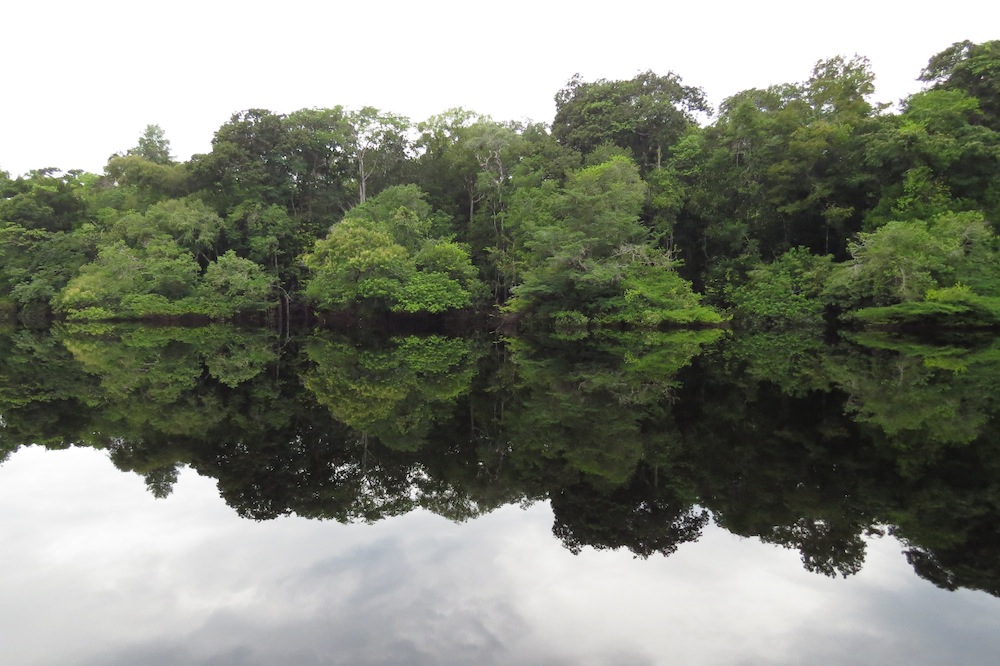A Few Tree Species Dominate Amazon Rain Forest


The Amazon is the largest and most diverse rain forest in the world — about 10 percent of all known species on Earth dwell there — but only a few dozen of the Amazon's thousands of tree species rule the jungle, researchers recently found.
This new analysis can help reveal which Amazon tree species face the most severe threats of extinction and which areas there are most in need of protection, scientists added.
Until now, researchers' knowledge of the types of trees in the Amazon and where they were located was based on analyses of regions — the rain forest's vast expanse made it challenging to survey in its entirety. For instance, scientists didn't even know the most common tree species in the Amazon.
To help shed light on this giant rain forest's tree composition, more than 120 scientists catalogued any trees with stems thicker than 3.9 inches (10 centimeters) at 1,170 different locations throughout Amazonia, the 2.3-million-square-mile area (6 million square kilometers) surrounding the Amazon River. They found that approximately 16,000 tree species made up this region. [Amazon Photos: Trees That Dominate the Rain Forest]
'Hyperdominant' trees
Of these 16,000 tree species, scientists unexpectedly discovered that only 227 species, or 1.4 percent of all the types of trees in Amazonia, made up half of the nearly 400 billion total trees estimated to live there.
"That's a much smaller number than anyone anticipated," study lead author Hans ter Steege, a tropical forest ecologist at the Naturalis Biodiversity Center in Leiden, Netherlands, said in a statement.
Get the world’s most fascinating discoveries delivered straight to your inbox.
Hardly any of these "hyperdominant" species, as the researchers call them, are consistently common across the Amazon. Each usually specializes in certain habitats — one or two types of forest, such as swamps or white-sand forests.
It remains unclear what makes any given species hyperdominant. One possibility is that hyperdominant species are unusually resistant to disease and herbivores.
"There's a really interesting debate shaping up between people who think that hyperdominant trees are common because pre-1492 [i.e., pre-Christopher Columbus] indigenous groups farmed them and people who think those trees were dominant long before modern humans ever arrived in the Americas," study co-author Nigel Pitman, an ecologist and conservationist of the Field Museum in Chicago, said in a statement.
Incidentally, the most common tree species in Amazonia is the palm species Euterpe precatoria, a relative of the açaí palm Euterpe oleracea), whose sweet berries are growing in popularity worldwide. The researchers estimate that 5.2 billion Euterpe precatoria live in Amazonia.
The scientists also estimated that 11,000 of Amazonia's tree species are very rare, which each of these rare types composed of fewer than 1 million trees and in total accounting for just 0.12 percent of all trees in Amazonia. Many of these tree types run a high risk of becoming extinct, even before biologists can discover them, the researchers said.
Better protection
Now that scientists have a better idea of where populations of tree species are located in Amazonia, they can figure out which Amazonian tree species might face the most severe threats of extinction.
"We can better predict the effect of deforestation and protection on populations of trees," ter Steege told LiveScience's OurAmazingPlanet.
In addition, conservation groups "can now better determine in which areas the richest, most diverse and potentially endangered species are found," Johan van de Gronden, director of the World Wildlife Fund Netherlands, said in a statement. "For the future of the Amazon, this is of great importance."
The scientists detailed their findings in the Oct. 18 issue of the journal Science.
Follow OurAmazingPlanet @OAPlanet, Facebook and Google+. Original article at LiveScience's OurAmazingPlanet.



